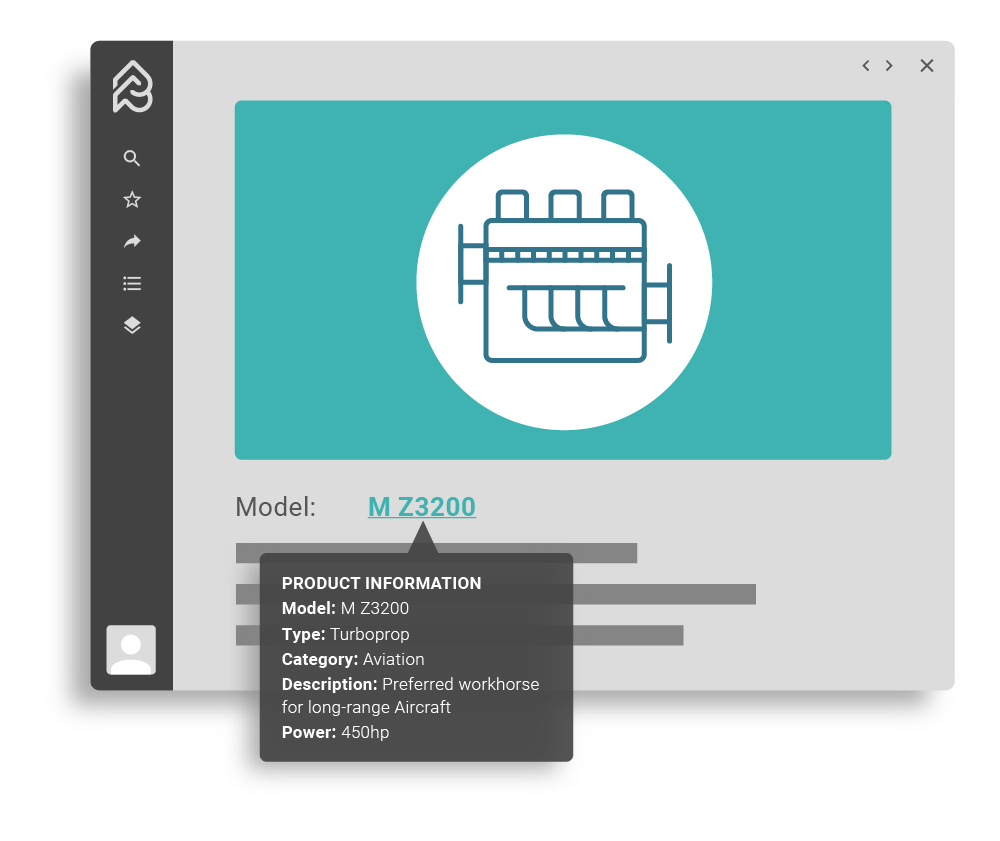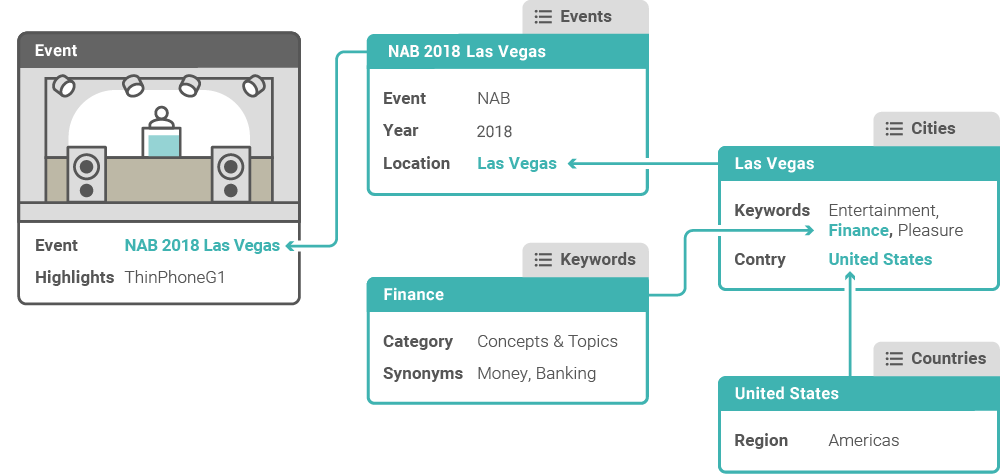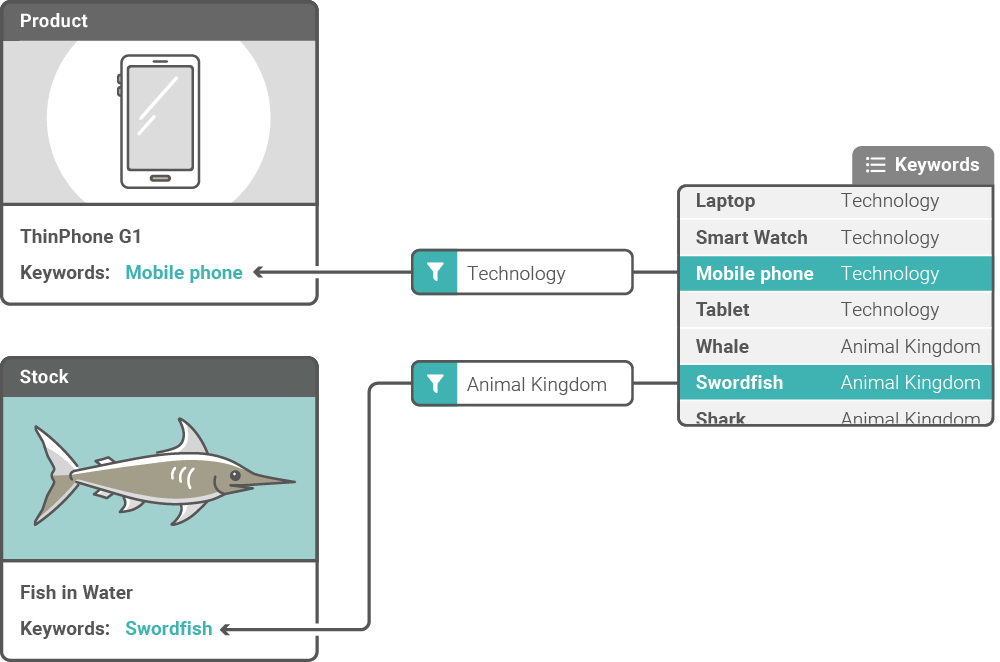By Picturepark Communication Team • Sep 21, 2017
Blog taken from a series of pages illustrating the functionalities of the Picturepark Content Platform.
Meaningful Searches
Semantic Relationships used in the Picturepark Content Platform enable users to find information not by what was explicitly expressed as a search term but by what was effectively meant: Searching for “people” also finds content tagged with “men” and “women” but not tagged with “people”, and still ranks exact matches for “people” searches on top.
Via Semantic Relationships, Picturepark can also ask for relevant guidance when searching, e.g. by letting users decide if they are looking for “apple” as in “technology” or “apple” as in “fruits”. Including their hinted intentions into search results makes finding relevant content a faster experience.

Knowing Context
The human brain processes information in a highly contextual way, considering massive amounts of interrelated information and constantly weighting associations between these pieces of information when e.g. making decisions about which shoes to buy.
The Picturepark Content Platform aims at providing your brain with those rich sets of information needed for better understanding and thoughtful decision making. For instance, instead of just showing the product SKU or name, you find a card with a summary of compiled product details. Some of these details can be further explored so that for instance you better understand how “waterproof” differs from “water-resistant” in the context of watch products.
In essence, Semantic Relationships used in the Picturepark Content Platform provide you better context for all your content, and make you more intelligent about it.
Multiple Dimensions
An important enabler for Semantic Relationships in Picturepark are Multidimensional Lists.
For each item in such list, attributes can be defined that further describe the item, or that are used to connect the item along a specific relationship to other list items. These items can again be related to items from other lists, and so forth, building highly interconnected neural networks of information.

While such neural networks are a powerful source of information, one can also get easily lost and overwhelmed. Using Multidimensional Lists and other capabilities of the Picturepark Content Platform such as Adaptive Metadata, you receive structured guidance so that complex information architectures can be built while remaining usable and manageable.
Custom and Built-in Vocabularies
Semantic Relationships are a two-way street: We have to define semantics first in order for Picturepark to provide semantics to us via search results, cross-links and information display.
There are several different kinds of semantic relations, synonyms and antonyms being the best known but hyponyms and hypernyms equally often used when designing taxonomies.
Picturepark
Using our reference models shipped with every new Picturepark, you can benefit from many years of experience in information architecture and, among others, use ready-made Adaptive Metadata layers as well as a well-curated vocabulary of thirty thousand controlled and inter-related terms available in multiple languages.
Similar to our brain constantly creating and weighting associations anew, you can always refine terminology and connections, and easily improve findability or relationships of your content managed through the Picturepark Content Platform.
Cleaner Data
Multidimensional Lists make metadata or content editing faster and more consistent because only items available in the list can be used as values by editors or via automation.

For doing so, items get organized in Multidimensional lists and linked with each other, creating nested information structures. Filters defined for each field of an Adaptive Metadata layer will have only certain items appear, based on e.g. a metadata domain or status.
This enables you to create fewer lists that each source consistently structured metadata or content for various use cases – without overwhelming editors with too many items of which many are not relevant.
Role-based Updates
Nesting, filtering and permitting lists and their items in the Picturepark Content Platform helps create ‘normalized’ information models that are interconnected yet still independent entities. Subject matter experts can curate their controlled vocabularies or content collections more independently and without conflicts to others while their changes will still be pushed through the entire system.
For instance, if the product manager adds a single product attribute to a product item then this will instantly enable all users to find images, videos, specifications, press kits etc. of that product when using the new attribute as a search term. No editor needs to update metadata on all of these items manually.
Multidimensional Lists can be managed in Picturepark, or updated via API based on data that comes directly from other source systems, such as enterprise resource planning (ERP), master data management (MDM) or product information management (PIM) systems.
